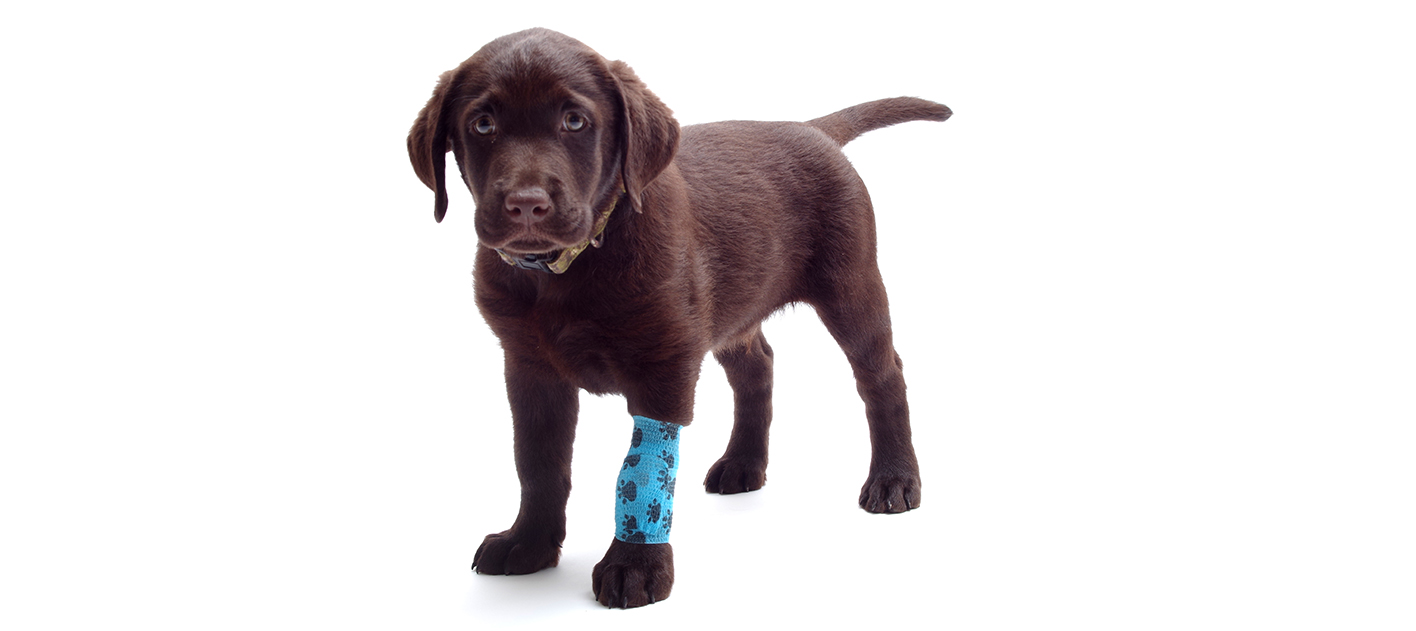Torn ACL In Dogs: Causes, Symptoms, & Treatment
Dogs are natural athletes. Whether playing, running, chasing or jumping, injury can strike at any time and render your pet sore and immobile. The most common orthopedic problem in dogs is not broken bones or age-related arthritis, but injury to the anterior cruciate ligaments (ACL), and one of the most common orthopedic diagnoses is a torn ACL.
What is the ACL?
The ACL is the anterior cruciate ligament (also known as the cranial cruciate ligament or CCL), a ligament in the knee that connects the femur with the tibia and is responsible for keeping the leg bones in place and stabilizing the knee joint. ACL injuries can come from either sudden or progressive failure of the ligament, causing lameness, pain and degenerative joint disease.
What Can Tear The ACL?
You will know if your pet has suffered a torn ACL, because if the ligament ruptures, the symptoms are immediate and significant. Lameness is the major symptom, with one leg unable to bear any weight. Your furry friend’s mobility will be severely curtailed and they will exhibit significant pain in the affected leg. The knee may also become swollen.
Almost any movement, even seemingly simple ones, can cause a tear in the ACL. Whilst sudden tears can result from trauma (such as car accidents, falls, or “plant-and-twists” motions), it is more likely your pet will have a progressive tear. Over time a weakness in the joint is put under progressively more pressure until one day the ligament tears, without a single notable incident prompting it.
How To Treat a Torn ACL in Dogs
Surgery is the most common treatment for a torn ACL, although surgery alone is usually not enough. Your pet will probably also need several months of recovery with carefully controlled movement to strengthen the joint. Surgery can be very expensive, ranging from $1500 to $4000. This procedure is relatively common, so you may want to confirm that your pet insurance covers it. Click here for a free pet insurance quote, and get coverage before your pet shows signs or symptoms of a ligament condition.
The one exception for surgery is small dogs (under 30 pounds), who can potentially recover sufficiently with strict cage rest. About a quarter of small dogs will improve a torn ACL without surgery, but this improvement is often temporary.
When surgery is not an option for you and your loved one, steps can still be taken to improve the tear:
- Strict rest for at least a month.
- Oral medications, especially for pain relief and inflammation.
- Weight control to ease pressure on the joint.
- Physical therapy to slowly increase your dog’s range of motion safely.
Dogs who have a torn ACL are at higher risk of tearing the other, so once this injury has occurred be on the look-out for any incipient signs of lameness in your pet. All ACL injuries, whether minor or major, in all dogs regardless of size, should be evaluated by your veterinarian. The true extent of the injury and best treatment route will vary depending on your dog’s circumstances.
Breeds At Higher Risk
Some breeds appear to be more at risk of ACL injuries than others. Labradors, Rottweilers, Bichon Frises, St Bernards and Newfoundlands are all at higher risk of ACL degeneration and their knees should be watched carefully for signs of micro-tears occurring.
If this were to ever happen to your pup, see how pet insurance can help protect your 4-legged friend and your wallet. See how it works!
Sources
https://www.gopetplan.com/blogpost/torn-acl-in-dogs
https://www.petcoach.co/article/ruptured-anterior-cruciate-ligament-acl/
https://canna-pet.com/torn-acl-dogs/
https://www.petmd.com/dog/conditions/musculoskeletal/c_dg_cranial_cruciate_ligament
